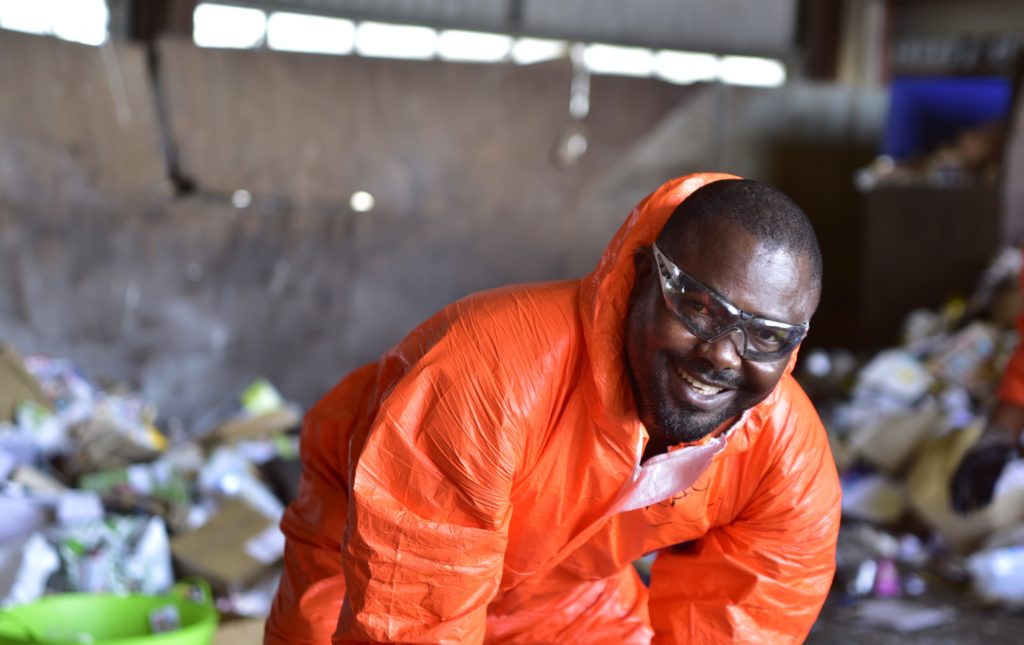 A good waste management plan is not only about recycling, it’s also implementing sustainability best practices throughout the organisation – from the supply chain to design, manufacture and disposal. Cleanaway’s waste health check or audit is a practical assessment of the rubbish you throw away, to recommend organisational, service, and behavioural changes to improve diversion and achieve sustainability goals. Quite literally, it’s about going through your waste and recycling bins, looking at each piece of rubbish being thrown away, and understanding what type of waste it is, how it got there, and how to improve its recovery. A waste audit can be the start of an effective waste management plan. Using data and results from the waste audit, your business can make informed decisions to set new goals and strategies for increasing waste management efficiencies.
A good waste management plan is not only about recycling, it’s also implementing sustainability best practices throughout the organisation – from the supply chain to design, manufacture and disposal. Cleanaway’s waste health check or audit is a practical assessment of the rubbish you throw away, to recommend organisational, service, and behavioural changes to improve diversion and achieve sustainability goals. Quite literally, it’s about going through your waste and recycling bins, looking at each piece of rubbish being thrown away, and understanding what type of waste it is, how it got there, and how to improve its recovery. A waste audit can be the start of an effective waste management plan. Using data and results from the waste audit, your business can make informed decisions to set new goals and strategies for increasing waste management efficiencies.
How a waste health check delivers on your sustainability goals
A waste health check helps develop better waste disposal habits among people in your organisation. A waste health check reveals what employees think about rubbish, their attitudes toward throwing them away and encourages them to think about the long-term consequences of their actions. It also helps identify opportunities to save on resources and costs. A waste health check can help identify waste streams that have the potential for recovery, increasing your diversion rates while potentially reducing the cost of general waste. A waste health check encourages a closer look into systems and processes like inventory management and procurement, potentially influencing strategic decisions about purchasing and design to positively impact the bottom line. Waste health checks are also an excellent way to get the whole team involved in the sustainability process and is a great tool for team building and boosting your sustainability credentials at the work place and in the eyes of your customers.
Features of a waste health check
While we tailor our waste health checks to suit your unique business needs, a typical audit process from Cleanaway involves:
Safety first briefing
This is the introduction to our audit process where our resource recovery specialists explain the process of the workshops and establish safety rules such as wearing gloves at all times and how to manage dangerous, sharp or unusual items.
Investigating what’s in the bin
The contents of the general waste bin are emptied and each item of waste is investigated to see what waste is being thrown away. For example, if a lot of cardboard is discovered in general waste, it builds a case for having a dedicated cardboard recycling bin instead. Even the commingled recycling bin can be audited to find out what items are contaminating the bin, which then informs our specialists how to structure training opportunities to prevent improper bin behaviours from recurring.
Understanding bin behaviour
After sorting, our specialist will engage with participants to discuss the reasons why material ended up in the particular waste bin. Is it because they didn’t know which bin it belonged in, they didn’t have time to find the right bin or the correct bin was full?
Engaging participants for solutions
Corrective measures are discussed as a group to understand what has to be done to minimise contamination and maximise recycling. The rage of solutions could include suggestions on improving signage, communication processes and hands-on training.
Developing the plan for action
The final step is to develop a waste management plan with participants, outlining the what, when and how better waste efficiencies will be achieved.
If you’re a Cleanaway customer, contact your representative to find out more about how we can help increase your sustainability through our waste health checks.
Not a Cleanaway customer? Contact 131339 to speak to an expert about the best solutions for your business.
